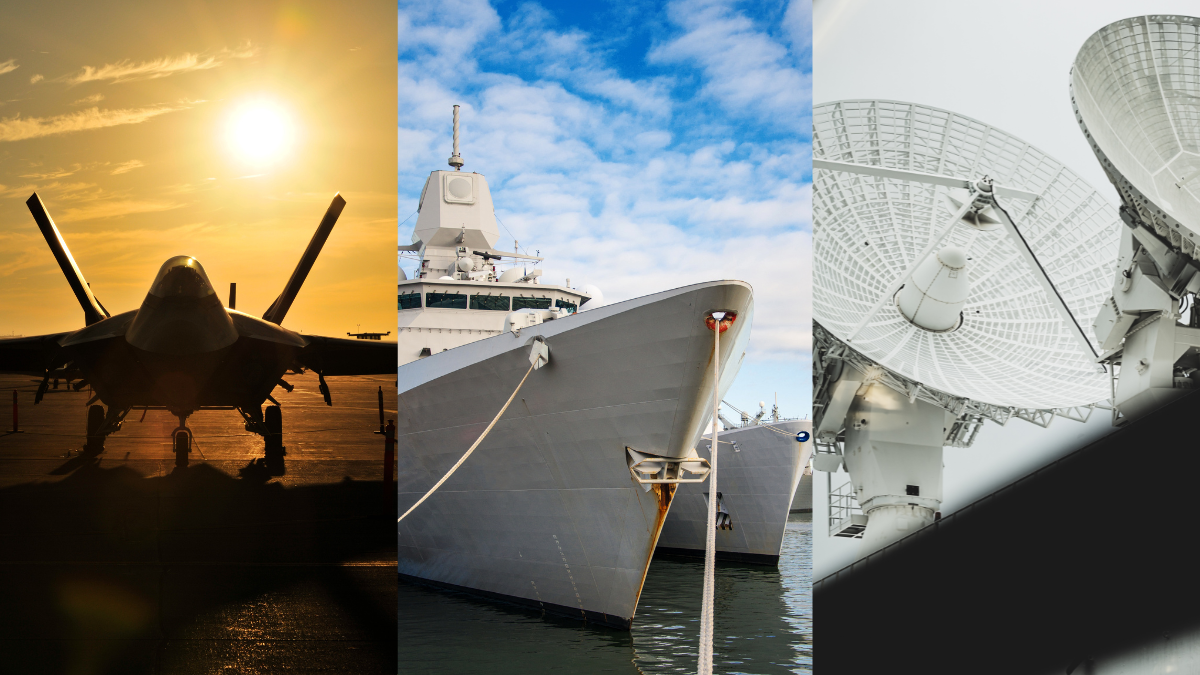Several key U.S. defense initiatives have encountered significant challenges and shortcomings, affecting their overall effectiveness and success. These obstacles range from technological limitations and budget constraints to logistical complexities and implementation delays. As a company dedicated to innovative solutions and strategic support, we are uniquely positioned to assist in overcoming these hurdles. This blog explores three critical U.S. defense programs facing difficulties and demonstrate how our expertise and resources can help enhance their outcomes and drive future success.
F-35 Block 4 Program Hurdles
In an effort to modernize, the DoD begins a $16.5B effort also known as Block 4 in 2018. Within this initiative was the ‘Technology Refresh 3 (TR-3)’, a $1.8B effort to upgrade hardware and software technologies improving processing capabilities, increased memory capacity, cockpit displays, and more.
The F-35 program, often called the “most expensive weapon systems program” with a $2T price tag, faced numerous challenges. Development, testing, integration, and deployment took longer than planned, with software upgrades proving “unstable.” Software issues relating to radar and electronic warfare systems required pilots to reboot mid-flight. In July 2023, F-35s with TR-3 hardware began rolling out, but software upgrades were significantly delayed. Consequently, the Pentagon has refused to accept new F-35s. Officials expect software patches to be needed every 2-6 weeks, compared to the previous 6-month to one-year intervals.
Overall, the Block 4 challenges have resulted in a $183B budget overrun and significant delivery delays, pushing back Block 4 completion from 2026 to 2029. This has led to a “truncated” delivery strategy, training disruptions, and budget diversions. The number of requested F-35s has been “slashed” in the 2025 defense bill, with funds reallocated towards software integration, testing capabilities, and more. Additionally, the F-35 is being “reimagined,” with planned capabilities deferred to the 2030s due to technical complexity, software inefficiency, and other factors.
Littoral Combat Ship (LCS) Program Blunders
In 2010, the Navy started working on its big plans for the Littoral Combat Ship: a small, fast and light class of vessels equipped with interchangeable weapons systems fit for various missions including surface warfare, mine countermeasure, anti-submarine measures and more. Despite high hopes for this program, a number of flaws arose quickly upon deployment.
The LCS’s design led to several issues. Built partly on commercial ferry designs for speed, they lacked critical system protections during attacks, accepting the risk of crew abandonment. They were also “gas hogs,” limiting their operational range due to high fuel consumption. Anti-warfare mechanisms faced communication errors between sonars, helicopters, and torpedoes, hindering anti-submarine capabilities. Mine-hunting technology was unreliable, often giving false alarms. Additionally, a design flaw in the combining gear, connecting turbines and engines, caused significant problems.
The LCS program faced numerous issues, with each ship costing over $500M — more than double the initial estimate. Design and development failures rendered the ships ineffective for their missions, lacking necessary lethality and survivability. The two different LCS versions led to further complications, with non-interchangeable parts and crews. High-profile breakdowns and ongoing mechanical problems meant crews spent more time fixing the ships than sailing, leading to morale issues. Initially planned to last 25 years, many LCS ships are being retired after less than a decade, with only 32 of the originally planned 50 being built. Despite these issues, Congress recently funded three additional ships.
Air & Missile Defense Radar Program Challenges
Although COVID-19 posed supply chain delays that hindered development on the Lower Tier Air and Missile Defense Sensors (LTAMDS), there were several other issues that plagued the radar program for the Army’s future Integrated Air and Missile Defense System.
Since December 2021, the program continues to face cost increase and schedule delays to accommodate a number of challenges. For one, many risks were present from the beginning regarding array panel manufacturing as well as subarray assembly suite modules and auxiliary power group cabinets. The Missile Defense Agency (MDA) also contributed to this program’s demise as they were unable to deliver and test critical hardware. In fact, it was reported that as of last June, 23 of the US Government Accountability Office’s (GAO) recommendations for helping the agency improve performance have still gone unmet. With flight, ground, and cyber baseline tests incomplete upon projected deadline, the radar program is suspected to have significantly less fielded capability than planned. This program’s most recent blow occurred August 2023 when Flight Test FTX-26 was unable to be executed due to a target anomaly, emphasizing an even more significant low program morale.
With many significant setbacks, the Long-Range Discrimination Radar (LRDR) remains one of the top priorities for the US Northern Command as this system is critical to missile defense and space domain awareness. In addition, it is noted that a software upgrade could give LRDR hypersonic weapon detection and tracking capability. Thus, an astounding $10.9B was requested by the MDA in FY24 to continue moving this program forward.
Ensure Program Success with Performance Defense
Performance Defense is a trusted provider of mission-critical engineering services within the defense community. While our niche of expertise resides in our DO-178C software engineering services, our suite of companies boasts 25 plus years of safety and mission-critical sector program success, including full life-cycle systems, software, and hardware engineering services, as well as comprehensive equipment testing.
As shown in the three examples above, we know that DoD initiatives don’t always go according to plan. Software, hardware, and testing complexities are often some of the biggest setback areas for new technology innovation which is why it is crucial to have a services and solutions partner you can trust to prevent, as well as problem-solve technology challenges in a cost-efficient, effective manner.
We are always looking for new opportunities to help our partners accelerate or recover their mission-critical programs. Interested in collaborating? Visit our website to learn more and connect.





